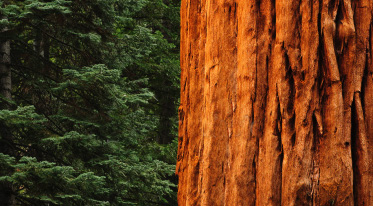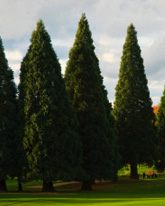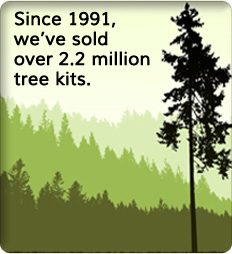 Loading... Please wait...
Loading... Please wait...- 1-800-343-2313
- Home
- My Account
- Gift Certificates
- View Cart
- Home
- Info/Blog
- Tree Types
- Dawn Redwood
Dawn Redwood
Metasequoia glyptostroboides
 First called a "fossil tree" because it was believed extinct, this fast growing tree is now a favorite ornamental. A deciduous conifer, it has a full pyramidal shape, grows to 120' high and turns a bright copper color in the fall. Will grow throughout the U.S. with adequate water.
First called a "fossil tree" because it was believed extinct, this fast growing tree is now a favorite ornamental. A deciduous conifer, it has a full pyramidal shape, grows to 120' high and turns a bright copper color in the fall. Will grow throughout the U.S. with adequate water.
Also called Water Larch. A deciduous conifer native to central China and is fast becoming a favorite North American ornamental. The Dawn Redwood has been called "a living fossil" because it was first discovered in Japan by Miki in 1941, then found growing in the wild in China. The species is over 50 million years old. It is a member of the Taxodiaceae (Redwood) family, which includes the Baldcypress. The genus name comes from the Greek word meta (meaning together or near) and Sequoia because of botanical similarities with the Giant Sequoia and Redwood. It was introduced to the United States and Europe around 1948. It grows in a full pyramidal shape up to 120' high and 25' spread. It is one of the few cone-bearing deciduous trees. In the Fall, the needles turn a bright copper color. The needles are bright green, about 1/2" long and soft. It is Unisexual, having both male and female flowers on the same tree. The cones contain about 5-9 winged seeds and are about 1" in size. The cones ripen in early December and shed the seeds shortly afterward. The Dawn Redwood is a hardy tree growing in such diverse climates as Maine, Alabama, and California. The average seed germinates is 5 days. It transplants easily and can be grown from cuttings. Prefers moist, well-drained soils and full sun. An excellent ornamental and good for screening.
 FAMILY: Taxodiaceae (Redwood) which includes the Baldcypress.
FAMILY: Taxodiaceae (Redwood) which includes the Baldcypress.
LEAVES: Deciduous, opposite in arrangement, linear, flattened, straight or slightly curved, pectinately arranged, 1/2" long and 1/16" broad on mature trees; upper surface is bright green with a narrow grooved midvien, lower surface bearing obscure lines of stomata, lighter green. Copper-brown in Autumn.
BUDS: Non-resinouse (opposite), usually in pairs at the base of deciduous branchlets but sometimes solitary between branchlets; ovoid or ellsoid, about 1/4" long, scales light reddish or yellowish brown with a linear keel, appearing stalked.
STEM: Branchlets of two kinds, persistent and deciduous; the persistent --bright reddish brown when young, shallowly ridged, carrying the deciduous branchlets, numerous vegetative buds and a few leaves; the green deciduous branchlets are up to 3" long, usually arranged distichously, more or less horizontal, ribbed with the long decurrent bases of up to 50 or 60 or more leaves.
SIZE: 70 to 120' in height by 25' spread, 40 to 50' high in 20 years under good growing conditions.
HARDINESS: Zone 4 to 8
SHAPE: Pyramidal, conical, regular with a single straight trunk in youth. Maintains a feathery-pyramidal growth habit. Branches grow almost horizontally.
RATE: Fast (50' in 15 to 20 years)
TEXTURE: Fine in leaf, less so when defoliated.
BARK: Reddish brown when young, becoming darker, fissured and exfoliating in long narrow strips: base buttressing and developing irregular fluted character.
LEAF COLOR: Bright green above changing to brown in fall; can be an excellent orange-brown to red-brown.
FLOWERS: Monoecious (separate but on same tree); Unisexual; male flowers in racemes or panicles (clusters at end of branches), female solitary.
FRUIT: Cones pedulous, on long stalks, globose or cylindrical, female solitary, 3/4 to 1" long and wide, dark brown, mature the first year, seeds small like those of arborvitae. Contains 5-9 winged seeds. Cones ripen in early December and shed their seeds in late December and early January. Seed wings are minute.
CULTURE: Hardy. Easy to transplant performs best in moist, deep, well drained, slightly acidic soils; is not well adapted to chalky soils; full sun; may grow late into summer and early fall and is damaged by an early freeze; best sight is a low hill rather than a low area. Seldom requires pruning due to neat, uniform, conical habit.
LANDSCAPE VALUE: Lovely ornamental. Good for screening.
PROPAGATION: Seeds, if viable, will germinate to a degree, but one-month cold stratification improves and unifies germination; can be grown from cuttings. About 5 days.
ADDITIONAL NOTES: The genus was first discovered from fossils by Miki in Japan. Later they we found growing wild in China. About 50 million years old. Also called Water Larch. The name is derived from the Greek meta, together or near, and Sequoia, referring to their botanical similarities. Sometimes called a living fossil. Fast growing, disease, and insect free tree. Little timber value since the wood is soft, brittle and weak.
NATIVE HABITAT: Native of (central China) eastern Szechuan and western Hupeh, China. Introduced to the U.S. in 1947-1948.






